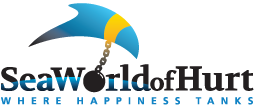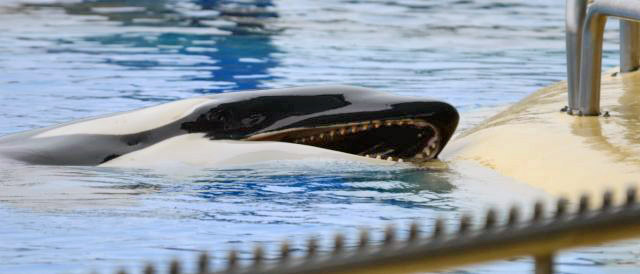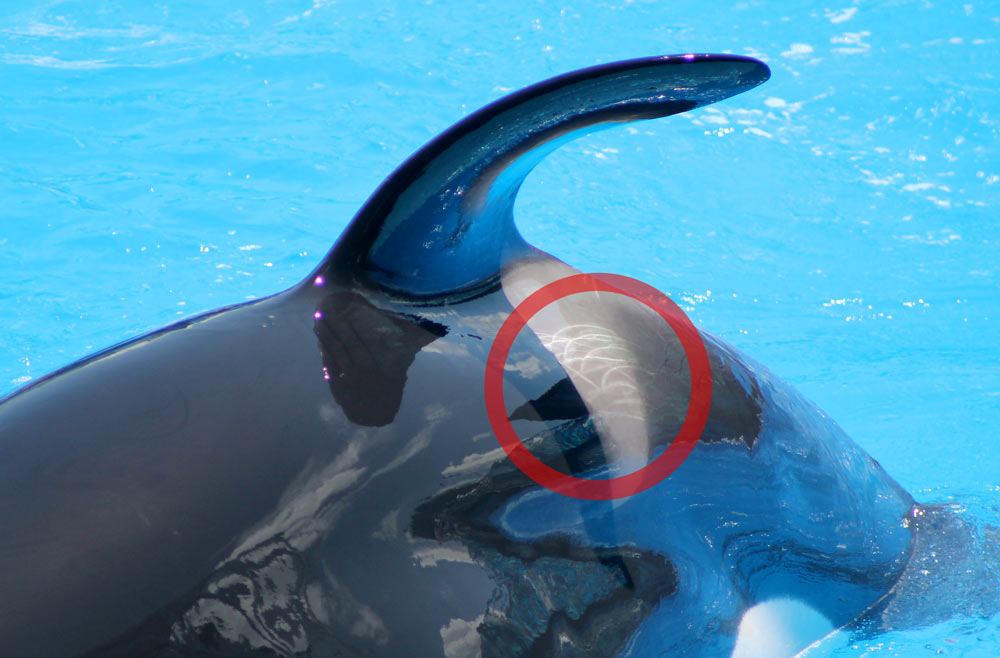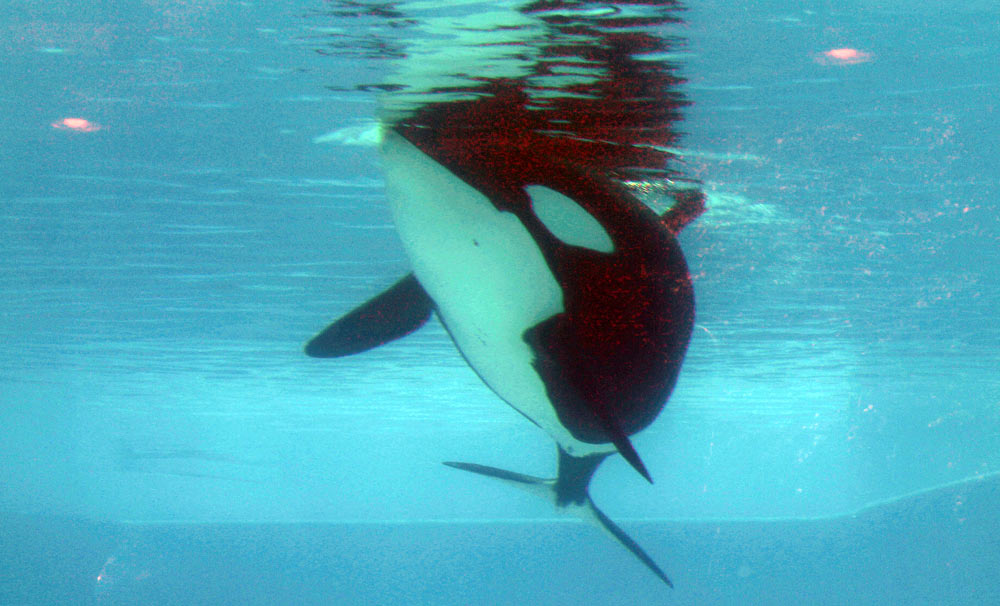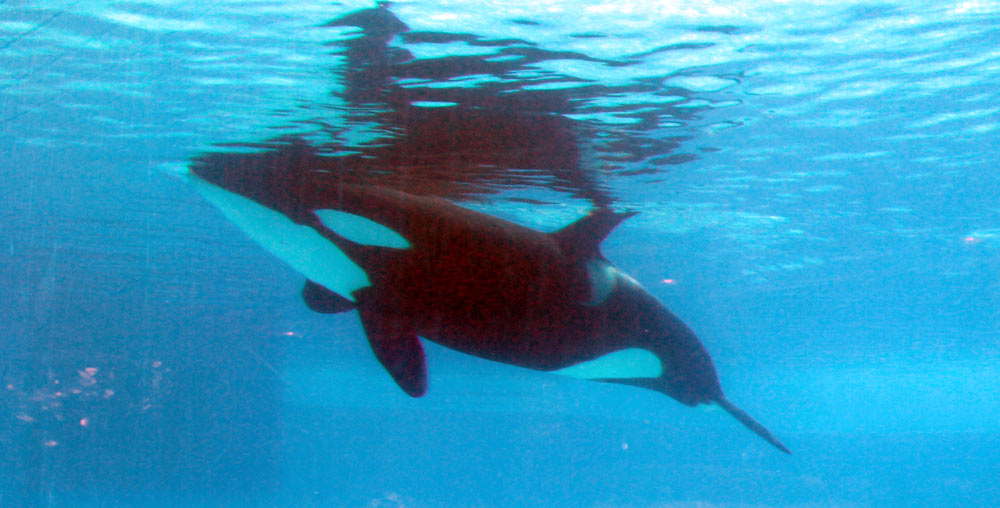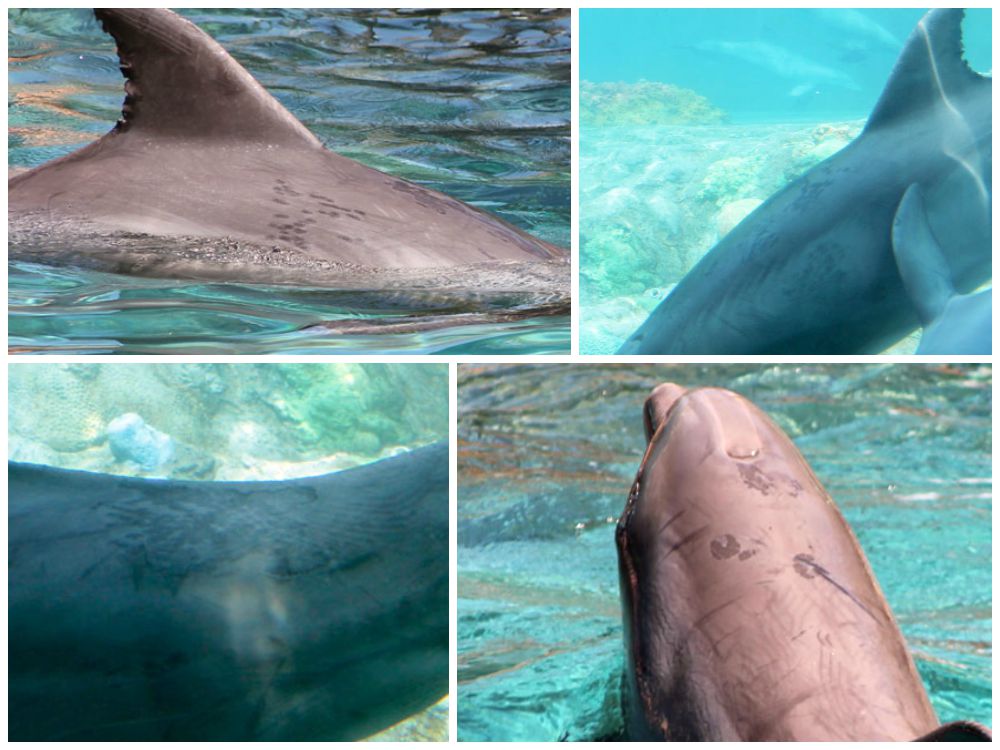SeaWorld Orlando is responsible for 19 orca deaths, and they aren’t the only animals who have died prematurely there. Recently, a beluga whale named Nanuq died from an infection after having his jaw shattered, and less than two weeks later, another life was lost, this time a bottlenose dolphin’s. In response, veterinarian Dr. Heather Rally traveled to Orlando to determine the health of animals confined at SeaWorld. Her findings were as follows:
Orcas
Dental Trauma
Dr. Rally found that all of the orcas in “The Shamu Show: One Ocean,” including the youngest, had signs of advanced dental trauma.
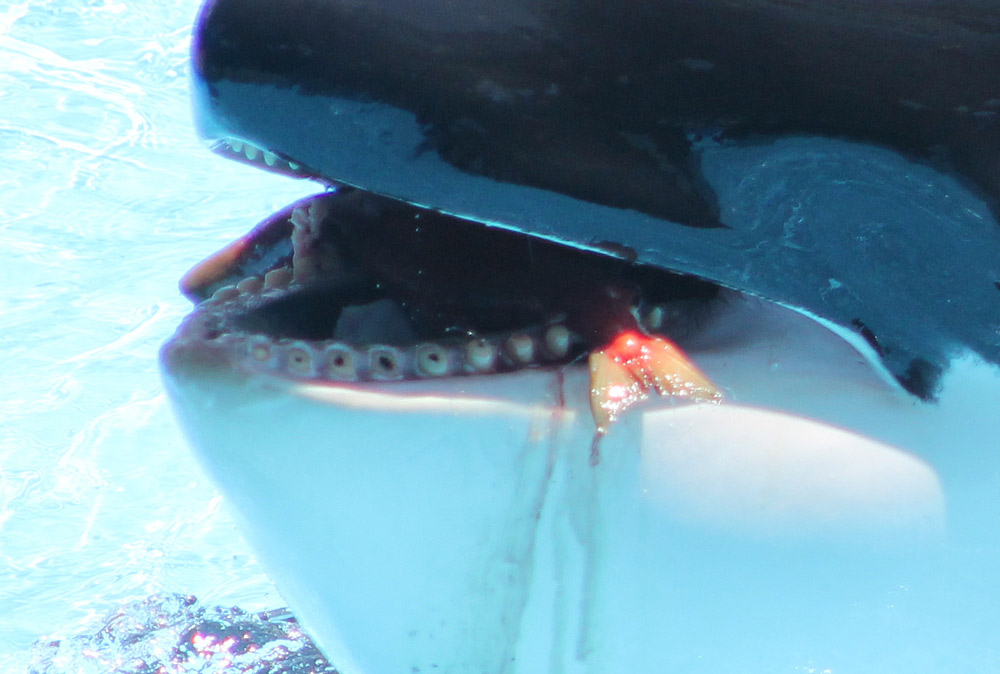
“Drilled and exposed pulp cavities of the first 5 mandibular teeth on the left side from dental trauma.” – Dr. Heather Rally
Bored and frustrated orcas often bite the gates and the sides of the tanks, which can cause broken and worn teeth. Fractured teeth can easily develop infections.
Dr. Rally says that these dental infections can easily spread to the bloodstream and cause systemic disease, including heart disease, pneumonia, and sepsis. In order to prevent death by infection, captive facilities often drill holes into the pulp cavity of broken or worn teeth to open the cavity enough to be flushed and cleaned daily, for the rest of the animal’s life.
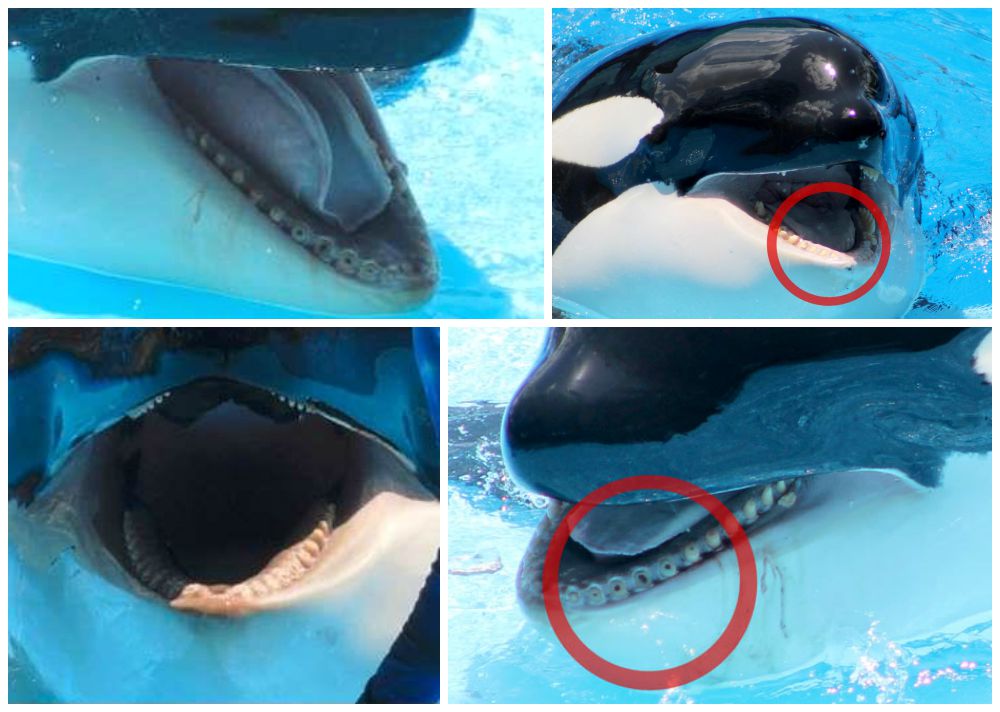
“All of the whales in the show, including the youngest, had signs of advanced dental trauma, including abnormal wear and tear, some missing teeth, and others that appeared to have had the pulp cavities drilled prevent infection and potential sepsis.” – Dr. Heather Rally
According to Dr. Rally this is often done without anesthesia and is likely painful to the animals. This type of dental trauma and wearing of the teeth is highly unusual to orcas living naturally in the wild.
Rake Marks
Dr. Rally observed rake marks on a number of orcas and dolphins. Rake marks are injuries on an animal’s skin that are inflicted by the teeth of another animal during an aggressive attack. With no place for subordinate animals to escape, these attacks can result in painful and serious injuries.
Trainers reported that Tilikum’s rake marks have been so severe at times that as he swam, blood would trail behind him. As a result, he would be held out of shows for days to heal.
Collapsed Dorsal Fins
Most captive orcas at SeaWorld have collapsed dorsal fins. According to Dr. Rally this is likely because they are confined to tiny tanks and are unable to swim vast distances as they would in the wild. Collapsed dorsal fins are uncommon in the wild.
Katina
Malia
Isolation
Dr. Rally observed an orca who was being housed in isolation at the underwater viewing area at Shamu Stadium. A staff member informed Dr. Rally that his name is Trua.
Trua was only 4 years old when he was torn away from his mother, Takara, who was sent to San Antonio. A trainer who worked with Takara said of the separation of Takara and her calves, “I can tell you without a doubt that her spirit was broken.”
Orcas in the wild live in pods, which are bonded groups of up to 30 orcas—including mothers and their offspring—who often travel together for their entire lives. At SeaWorld, many calves are taken away from their mothers, and this can cause significant social and psychological problems for the rest of their lives.
Dr. Rally observed Trua exhibiting a repetitive swimming pattern, which is uncommon in the wild and is believed to be a sign of psychological stress and boredom in captivity.
Where’s Tilly?
Tilikum was not observed at any point during the visit by Dr. Rally, and she said it’s unclear where and how he’s being held. However, after Tilikum tragically killed Dawn Brancheau, he was kept in a tiny enclosure that limited his opportunities to swim, communicate with other orcas, and interact with humans even further. He was reported to have been floating listlessly in the water for hours at a time, a behavior never seen in wild orcas.
 "Shamu" (Tilikum) | Milan Boers | CC BY 2.0
"Shamu" (Tilikum) | Milan Boers | CC BY 2.0Tilikum, one of the largest orcas held captive at SeaWorld, has been in captivity for over 30 years. His sperm has been used to father over half the orcas at SeaWorld’s parks, even though he has killed three humans.
Dolphins
Poxvirus
The lesions caused by poxvirus are seen commonly on both captive and wild dolphins. However, they tend to present with greater frequency and severity in animals who are stressed or whose immune systems are otherwise compromised, as noted in the Canadian Journal of Veterinary Research.
Dr. Rally believes the lesions may be indicative of underlying stress and/or disease, which could pose welfare concerns. She thinks there is also the possibility that these are, in fact, lesions resulting from a different infectious disease or as a result of excessive sun exposure, something SeaWorld has been criticized for. Under the federal Animal Welfare Act (AWA), it is required that animals have sufficient shelter from direct sunlight, but at SeaWorld, there is little shade above or below the surface of the water where animals can retreat from the scorching sun.
Public Interaction With Dolphins
At SeaWorld, numerous injuries have resulted from interacting with dolphins, such as when a dolphin lunged for a tray of food and accidently bit a girl.
Following these incidents—and PETA’s complaints and requests for U.S. Department of Agriculture (USDA) investigations in response to them—SeaWorld Orlando announced that it’s ending its public dolphin-feeding program. However, interacting with dolphins even without feeding them could still be hazardous for humans and dolphins.

“I observed several training sessions with guests, and guests were never instructed to wash their hands before interacting with the dolphins.” – Dr. Heather Rally
Among the dolphins at the lagoon, there appeared to Dr. Rally to be a higher number of animals showing signs of extensive skin pathology, and scarring likely caused by aggression, in comparison to dolphins exhibited in the show at Dolphin Stadium. The veterinarian thinks this could be because of the combination of stress induced-immune suppression and constant exposure to organisms found on human hands.
Walruses
Repetitive, Abnormal Behavior
Dr. Rally noted that during the visit, the larger of two walruses housed together in a small enclosure spent at least 20 minutes engaging in a repetitive swimming pattern, which is likely an indicator of chronic stress, boredom, and inhibition of natural behaviors as a result of inadequate living conditions at SeaWorld. Obie, a walrus who was observed exhibiting similar behavior during a veterinarian’s visit to SeaWorld San Diego died less than a year after the visit.
What You Can Do
Based on the findings of veterinarian Dr. Heather Rally, PETA has filed a formal complaint with the USDA regarding numerous apparent violations of the AWA and urged the agency to inspect SeaWorld and hold the company accountable for any violations found.
Please, don’t go to SeaWorld, tell others why, have a Blackfish viewing party at your home, and use our information to spread the word that animals are not ours to use for “entertainment.”
